Report from Liz Corry
Captive choughs at Durrell
 With the breeding season looming, staff at Durrell have been working hard this month to set up the breeding aviaries and move the birds around accordingly. Gianna was moved out of her off-show holding into the main display aviary. She was kept in the shut-off for two days as a way of re-introducing her to the group. She received a very uneventful welcome: Gwinny was the only one to fly down to her and that was only because she was looking for food.
With the breeding season looming, staff at Durrell have been working hard this month to set up the breeding aviaries and move the birds around accordingly. Gianna was moved out of her off-show holding into the main display aviary. She was kept in the shut-off for two days as a way of re-introducing her to the group. She received a very uneventful welcome: Gwinny was the only one to fly down to her and that was only because she was looking for food.
 On the 19th the three juveniles in SF3 were caught up and moved to the display aviary. These three birds will make up half of the release cohort. Before being released into the main flight all three birds were fitted with active radio-transmitters and an incoloy leg ring. The battery life on the radio transmitters is such that it should not run out before the birds moult tail feathers in autumn.
On the 19th the three juveniles in SF3 were caught up and moved to the display aviary. These three birds will make up half of the release cohort. Before being released into the main flight all three birds were fitted with active radio-transmitters and an incoloy leg ring. The battery life on the radio transmitters is such that it should not run out before the birds moult tail feathers in autumn.
When the three juveniles were released into the main flight the other juveniles paid them a lot of attention. There was a lot of squabbling and defending of roost sites but no real aggression observed. The breeding pairs have stayed together throughout this which is looking positive for the new breeding season.
 Once the juveniles had been moved out of the off show aviaries work could begin to prepare them for the breeding season. Apart from the obvious spring clean a few modifications were needed to improve our chances of a successful breeding season. Plywood has been added to a part of SF3 aviary to ensure a complete visual barrier between the choughs and any disturbance at the back of the aviary. The Orang-utan House kitchen and maintenance area is located behind the aviaries as well as other breeding bird enclosures. Daily disturbance should now be limited.
Once the juveniles had been moved out of the off show aviaries work could begin to prepare them for the breeding season. Apart from the obvious spring clean a few modifications were needed to improve our chances of a successful breeding season. Plywood has been added to a part of SF3 aviary to ensure a complete visual barrier between the choughs and any disturbance at the back of the aviary. The Orang-utan House kitchen and maintenance area is located behind the aviaries as well as other breeding bird enclosures. Daily disturbance should now be limited.
The nest box in SF2 has been relocated to the other side of the aviary to increase the distance between the two nests. We are not sure how much this influenced last year’s breeding, but the two pairs were very aware of each other and were almost synchronous in nesting behaviour, for example they kicked eggs out of the nest on the same days.
Another major difference compared to last season is in how we house the nest box cameras and what type of camera is used. We have tried to ensure the birds cannot tamper with the position of the lens. We are using different cameras and will not really know how effective they are until the birds are in the enclosure. No pun intended, but we will monitor closely!
Progress of the release aviary
 The release aviary is now nearing completion. The major building tasks have been completed and the focus now is on making sure that the release hatches operate smoothly and all the necessary interior fixtures and fittings are in place. Work will begin on signage for the site when the choughs move into the aviary.
The release aviary is now nearing completion. The major building tasks have been completed and the focus now is on making sure that the release hatches operate smoothly and all the necessary interior fixtures and fittings are in place. Work will begin on signage for the site when the choughs move into the aviary.
There were several visitors to the aviary in February including Mike Stentiford, Professor Carl Jones, Dr Richard Young and Paul Buckley. Each guest was shown around the aviary and went away suitably impressed.
Other news
On the 10th, Sally Dalman from the National Trust for Jersey volunteered her time to shadow Liz for half a day in the Bird department. Unfortunately she picked a day where it persistently tipped it down with rain. However, it was still beneficial and both parties gained a greater understanding of what each other’s jobs involve.
On the 23rd a group of Durrell’s volunteer guides were shown around the chough enclosures and updated on the progress of the release project and BOTE. They will hopefully be able to incorporate this information into their talks at the Wildlife Park and answer any questions posed by the public.
Biannual faecal samples were required from all the birds at Durrell this month; awaiting final results for choughs.


























